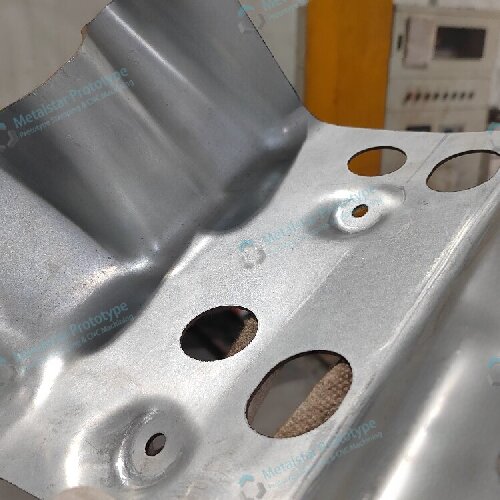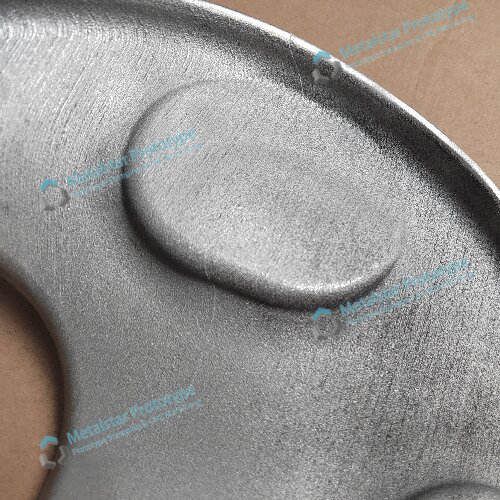As calendar opens to the page of year-2016, for the one who runs a prototype factory that mainly focus on providing traditional sheet metal prototyping and CNC machining service, it is the time that he may have to think about how to cope with the time change, which is driven by the revolution of 3D print technology.
It is well-acknowledged that 3D print will drive the human being go to a upgraded industrial planet in a near future, because it will print everything you want in any materials and in any structures. So, a question to myself: do you think the 3D print technology will overturn the whole traditional prototyping way? If so, do I need to shut off my entire factory, both sheet metal prototype fabrication and CNC machining service department?
To answer this question, let’s define firstly what is the “traditional prototyping way”? Usually, when we say “metal prototyping or plastic prototyping”, it links to traditional CNC metal and plastic machining technology, sheet metal fabrication by cutting, forming, bending etc.
I want to start with plastic prototyping, because I have been deeply feeling that the traditional CNC machining service will be replaced by 3D print technology eventually, in 2 years? In 5 years? I don’t know exactly, but I know it comes soon. I say that is because my factory experienced a gradually sale decrease at CNC machining department in the past 2 years, but meanwhile the newly-established 3D plastic print department gains 30% sales increase each year. Although things changes so quickly, we have no choice but face it! If we look into the technology of plastic 3D print, it is actually not a brand new technology, we had SLA, SLS technology many years ago, and theories of these technologies actually are similar to each other. Mainly because of low-temp melting physical feature of plastics, and it is not difficult to produce power or silk plastic raw material, plus with dramatically raw material cost decrease, so more and more companies chose using 3D printing way for plastic prototype making. Besides, 3D print for plastics also brings higher precision and much reduced wastage of raw material.
Well, turn to the topic of sheet metal prototyping: 3D print will overturn the traditional sheet metal prototyping in the near future? In the second half year of 2015, I learnt from my co-workers and industrial partners that some of big company started 3D metal print for prototype. This news really makes me feel a little bit nervous for a while. Do I have to equip 3D metal printer and reduce the quantity of traditional bending machining, puncher and hydraulic pressers? Or even abandon them in strategy? But after think it deeply, I gave up the idea. To share my thought with my customers, partners and my competitors: I believe the traditional sheet metal prototyping way will not be replaced by 3D metal print at least in 10 years, and I will keep focusing on providing high quality sheet metal prototype in traditional way for a long time. To get this conclusion is because I considered the following 3 main points:
1, firstly, compare with plastics, metals have much higher melt-temperature, this point cause much bigger barrier to the technology of the printer itself, as well as device developing or investing cost, but this is not the biggest difficult point.
2, the biggest challenge is how to get the raw material in powdered metal or in silk metal in a reasonable price. We all know the difficulty of producing consist quality of powdered metal or silk metal, it requires high precise devices and consumes high energy, these 2 main barriers cause very high raw material cost. So far only 1 or 2 Germany companies supply this kind of raw materials in pretty expensive price, but the raw material types are very limited.
3, invest a lot for equipping 3D metal printers and use high price raw material to print sheet metal prototypes or low volume sheet metal fabrication? For example 10pcs steel cases of washer maching or 100pcs steel lids of BBQ? It seems really infeasible for cost reason at least in the next 10 years. Of course, 3D metal printing technology has its advantages for those small, high precise, complex structure and small quantity prototype, but for those big parts and request low volume production, the traditional sheet metal prototyping way will be still has its advantages for a long time.
Back to the beginning, being a prototype factory owner, how do I make strategy change for current sheet metal prototype fabrication and CNC machining service department? The answer become much clearer after I wrote these above: the trend is that 3D printing will replace traditional industrial manufacturing way eventually. In plastic prototyping field, it comes much sooner. In sheet metal prototyping field, the traditional sheet metal prototyping way will still have its advantage to live at least in coming 10 years.
Metalstar specialized in supplying sheet metal prototypes, CNC machined parts and short-run production – focusing on rapid deep drawn stamping and rapid custom stamping. We also provide various of surface finishing. Welcome to visit our website for more information at: https://gzmetalstar.com


